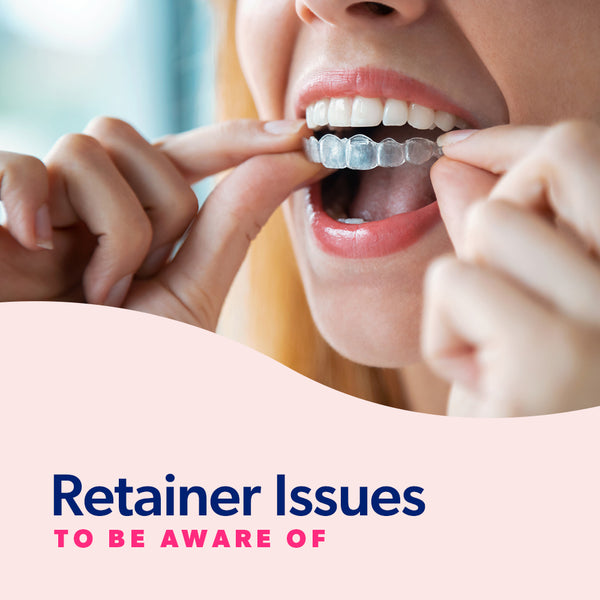
Retainer Issues to Be Aware Of
Once you've had braces, you probably know that a retainer is an essential part of your orthodontic care. A properly fitted retainer will solidify the alignment results of your braces. Since there are many different types of retainers, you have flexibility in whatever option you and your orthodontist choose. However, you may have encountered some obstacles when it comes to daily retainer maintenance.
Let's dive into the most common issues people face with their retainers and how to remedy them!
What Happens if You Don't Wear Your Retainer?
If you don't wear your removable retainer consistently, your teeth will gradually move back to their original positions. When your teeth shift, it can affect your bite, your alignment and how your retainer fits in your mouth. Forgoing your retainer for extended periods can cause crooked teeth and become more difficult for your orthodontist to adjust. Wearing your retainer as instructed can help you avoid more significant dental complications and loss of time and money.
How to Know if Your Retainer Doesn't Fit Anymore
To test if your retainer still fits, you can place it gently in your mouth and see if it slips into place. If your retainer fits correctly, it will feel somewhat snug and gradually loosen up to eliminate any discomfort. If it doesn't fit easily, make an appointment with your orthodontist to ask for help.
Only wear your retainer if it fits comfortably. Trying to force your retainer to fit around your teeth after they have shifted can damage both your teeth and your retainer. It is best to contact your orthodontist and schedule an appointment so they can adjust your retainer to fit your teeth better.
8 Common Retainer Issues
Here are some common problems which can arise regarding the condition of your retainers.
1. Too Loose or Tight
A retainer that doesn't fit properly is something many wearers struggle with. A Hawley retainer's clasps may loosen through everyday use, and a clear plastic retainer may relax. If your retainer doesn't fit on one side of your mouth or feels so tight you have to wedge it into your mouth, your orthodontist may need to replace or adjust it to prevent your teeth from shifting back into their original positions.
Other signs of an ill-fitting retainer are a poking wire or plastic which cuts your mouth or an overly tight or painful fit. Bonded or permanent retainers may also cause tooth movement with everyday use and the glue or wires can break down. If your permanent bottom retainer is loose, your orthodontist may need to replace and reapply it.
2. Improper Alignment
Over time, your retainer's alignment can change if you cannot return to your orthodontist for retainer checks and adjustments. While your retainer may experience minor changes over time, these alterations in your retainer's alignment may be less evident. If these changes become more severe, your teeth will continue to move, and your current treatment may become less effective.
3. Discomfort
While getting used to your retainer will take some time, it should not cause you any discomfort. A sign that your retainer is not fitting is if it is uncomfortable. Improperly fitting removable retainers may irritate your mouth and cause painful pressure around your teeth and gums. If your permanent retainer is uncomfortable, we recommend you speak with your orthodontist.
4. Lose Shape
If your retainer has become misshapen, it will no longer fit in your mouth. Dropping, stepping on, sleeping on or bending your retainer will cause it to lose its shape. You must also be careful not to expose your retainers to high temperatures. Clear plastic retainers are especially sensitive to heat and may become warped. Be careful when washing your retainer not to use water that is too warm.
5. Lack of Motivation
If you fail to wear your retainer as instructed, your teeth are more likely to move out of position. While it's tempting to forgo wearing your retainer for a night or two, it can prove detrimental to the alignment of your teeth. If you don't wear your retainer for a long time, it will also hurt more to put back in, which can discourage you from continuing to wear it.
6. Buildup
Over time, your retainer can exhibit plaque or calcium buildup even with the most diligent care. While removable retainers can be taken out of the mouth for cleaning, a bonded retainer will require more maintenance. Taking the proper measures to clean your retainer with products such as WhiteFoam can help you clear buildup and avoid discoloration quickly with no soaking required.
7. Breakage
Over time, your retainer may display small cracks and chips in the plastic or acrylic. These points of weakness will continue to grow until your retainer does not have the strength required to keep your teeth in their proper positions. For a bonded retainer, you may experience a wire fracture or debonding, resulting in malalignment. Your retainer may also experience breakage from regular wear or carelessness.
8. Lost Retainer
Lastly, if you have lost or misplaced your retainer and do not wear it for a substantial period, your teeth may gradually shift back to their original positions. If you cannot find your retainer, contact your orthodontist and have a new retainer made. It is helpful to keep your retainer in its case and store it in a safe, memorable place.
How to Combat Common Retainer Problems
Early detection and management of retainer issues can dramatically reduce the severity of the problems you have. Fortunately, there are simple solutions to many common retainer issues.
1. Follow Retainer Wear Instructions
It is critical to follow the instructions for taking care of and wearing your retainer. By doing so, you can prevent relapse and shifting teeth following the removal of your braces. A properly fitting retainer will reduce the tendency of your teeth to move. However, if your teeth move too much from a lack of proper retainer use, you may need to have new retainers made or get braces again to realign your teeth.
You can increase your retainer's longevity by putting it on and taking it off carefully. Ensure there is no gap between the teeth and the retainer's support, and remember not to use your tongue to remove your retainer. By easing it off and gently loosening it in several places with your fingers, you will avoid damaging your retainer.
2. Schedule Retainer Check Appointments
When you have concerns about your retainer or its fit, it's a good idea to schedule a retainer check appointment. Your orthodontist can evaluate your retainer to catch any problems before they become more severe and detect even subtle changes you might not recognize. If your retainer is not fitting well or you can tell that your teeth have begun to shift significantly, your orthodontist will help adjust your retainer accordingly or fit you for a new retainer.
If you have a traditional Hawley retainer, your orthodontist may adjust the same appliance to fit your mouth again. For a clear plastic retainer, your orthodontist will need to create a new set from either the original mold or a new mold.
3. Clean Your Retainer Regularly
An excellent way to maintain the integrity of your retainer is to remember to clean it regularly. If you treat your retainer as an extension of your teeth, you can keep it fresh and clean and increase its life span. Brushing your teeth before and after you wear your retainer will also help you keep it and your teeth clean.
What Are Proper Cleaning Practices for Retainers?
The best way to clean your retainer is to use a specialized product optimized for preservation and cleansing. Using a pump of EverSmile's WhiteFoam cleansing product is a safe and simple way to prevent buildup and staining.
Our fast-acting WhiteFoam is a minty foam combined with hydrogen peroxide, which allows you to wear your retainer while you clean it! As the foam reaches every nook and cranny of your retainer, it ensures a refreshing clean throughout the day, which can also whiten your teeth. Unlike toothpaste, which can be abrasive and scratch your retainer's surface, or mouthwash which will distort it, WhiteFoam makes it easy to keep your removable retainer in excellent condition.
Contact EverSmile for Effective Retainer Cleaning Solutions
When you want to get the most out of your retainer, understanding the most common problems people encounter will help you preserve your retainer and keep your teeth aligned and healthy. EverSmile's retainer cleaning products can help you feel better about your retainer and your smile.
Shop our products online or reach out to us to learn more about our cleaning options!
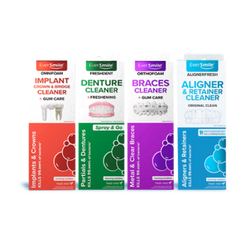
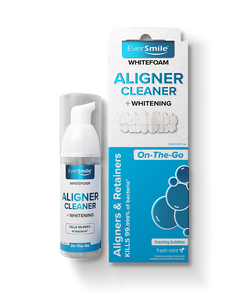
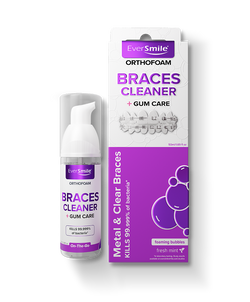
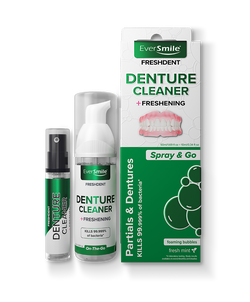

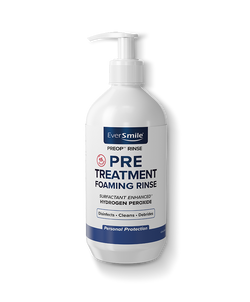

Post a Comment!